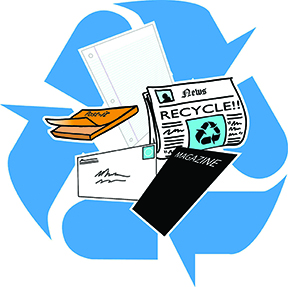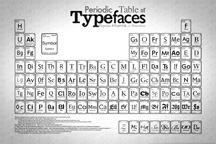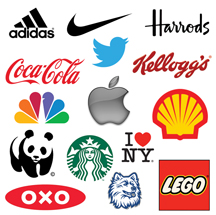 Amid the ongoing debate about whether direct mail or e-mail or social media is the best method to market to customers and prospects, very little is being said about the one thing that is crucial to the success of each – the message. Unless the message is relevant to the audience and persuasively presented, it doesn’t matter how it is delivered. So while the discussion about the delivery method continues, focus on developing good content and honing your writing skills.
Amid the ongoing debate about whether direct mail or e-mail or social media is the best method to market to customers and prospects, very little is being said about the one thing that is crucial to the success of each – the message. Unless the message is relevant to the audience and persuasively presented, it doesn’t matter how it is delivered. So while the discussion about the delivery method continues, focus on developing good content and honing your writing skills.
Category Archives: Uncategorized
Envelopes Play an Important Role
 This happens all too often… a project is conceived, designed, and printed before any thought goes into how it will be mailed. When this happens, typically an envelope is selected that doesn’t fit correctly. When we say begin with the end in mind, weíre suggesting that early in the planning process some thought should be given to how the project will be distributed; specifically, what type and size envelope will be used.
This happens all too often… a project is conceived, designed, and printed before any thought goes into how it will be mailed. When this happens, typically an envelope is selected that doesn’t fit correctly. When we say begin with the end in mind, weíre suggesting that early in the planning process some thought should be given to how the project will be distributed; specifically, what type and size envelope will be used.
If you intend to mail your brochure, invitation, thank-you card, or other material, it is a good idea to size the piece to fit in a standard envelope. Although it is possible to have envelopes custom-manufactured in a special size, the process is expensive and not feasible for fewer than 10,000 envelopes.
Expand Your Outreach with Print Newsletters
 “Print is still the most portable medium for most people, and it’s the preferred way to read large documents (three or four pages and up). Print also gives you total control over the look and feel of your message, which is extremely important when image is a critical component of your program.” Don Sadler / BrainTrust
“Print is still the most portable medium for most people, and it’s the preferred way to read large documents (three or four pages and up). Print also gives you total control over the look and feel of your message, which is extremely important when image is a critical component of your program.” Don Sadler / BrainTrust
One of the oldest and most effective ways to stay in touch with your existing customers, prospects, and members is with printed newsletters. Arriving by snail mail, they contain valuable, information-rich content and are an effective complement to online promotions. They also serve niche markets where print is a preferred format. Due to the decrease in postal mail, print newsletters stand out, unlike online newsletters that tend to get lost in email boxes.
Many businesses understand the value of direct mail as a marketing tool. But have you ever considered the value of a newsletter as a sales-related publication? A newsletter can help your business or non-profit organization generate new business or increase membership, cultivate customer and member loyalty, increase repeat sales or continued giving, and boost referrals.
How can a newsletter accomplish all these objectives? By communicating useful information in an easy-tounderstand format. And when we say useful information, we mean not only facts, tips, and expert advice, but also new product or service information.
Press Releases that Grab Attention
 Suppose that your business or organization has just purchased a new piece of equipment or has just launched a new service, and it’s time to get the word out. A multi-faceted approach usually works best. This might include taking out ads in newspapers or trade journals, sending out a direct-mail package or postcard, or utilizing social media. But one of the most effective methods is sending out a news release. Traditional printed press releases remain one of the best ways to get the news to the right audience, at the right time, very inexpensively.
Suppose that your business or organization has just purchased a new piece of equipment or has just launched a new service, and it’s time to get the word out. A multi-faceted approach usually works best. This might include taking out ads in newspapers or trade journals, sending out a direct-mail package or postcard, or utilizing social media. But one of the most effective methods is sending out a news release. Traditional printed press releases remain one of the best ways to get the news to the right audience, at the right time, very inexpensively.
An Environmental Success Story… Paper Recycling
 Paper recycling is more than just putting used paper in an appropriately-labeled recycling bin. Rather, it is an entire process that includes collecting, sorting, shipping, manufacturing, and purchasing the newly-made products in a repeatable cycle. Whether paper is made from trees, crops, agricultural residue, or other fibers, a recycling system is needed to promote environmental sustainability.
Paper recycling is more than just putting used paper in an appropriately-labeled recycling bin. Rather, it is an entire process that includes collecting, sorting, shipping, manufacturing, and purchasing the newly-made products in a repeatable cycle. Whether paper is made from trees, crops, agricultural residue, or other fibers, a recycling system is needed to promote environmental sustainability.
A surprisingly large number of products can be made from recycled materials: fine writing and printing papers; newspapers and magazines; household paper products like paper towels, napkins, facial and toilet tissue; office products like copy paper, file folders, envelopes, and adding machine tape; packaging products like cereal packages, egg cartons, gift boxes, and cardboard boxes; game boards; animal bedding; and insulation.
More Than Ever Before… Type Matters
 Typography has always been important as a design element in written documents. It attracts and holds the reader’s attention, indicates a hierarchy of information, creates harmony, and builds recognition without the reader being conscious of it. Good typography is part of the design structure that underlies effective communication.
Typography has always been important as a design element in written documents. It attracts and holds the reader’s attention, indicates a hierarchy of information, creates harmony, and builds recognition without the reader being conscious of it. Good typography is part of the design structure that underlies effective communication.
Now, as the world develops a new visual culture in smart phones, tablets, notebooks and e-readers, we are beginning to realize just how influential typography is in providing information and shaping opinion. More than ever before, type matters.
Let’s Keep in Touch… Six Ways to Stay in Contact
 Marketing experts agree: the basis for developing new business, whether new work from an existing customer or the first job from a prospect, is to communicate with them. Experts also agree that the more different kinds of communication tools a business or organization uses, the more efficient the outreach and the more likely it is to successfully reach the person targeted. Relying on only one or two methods to make contact is risky when the person you want to reach has voice mail and the “delete” command to avoid phone calls and e-mail, and may not participate in all forms of social media. To help you improve your chances of having a successful communication, we offer six ways to contact customers and prospects.
Marketing experts agree: the basis for developing new business, whether new work from an existing customer or the first job from a prospect, is to communicate with them. Experts also agree that the more different kinds of communication tools a business or organization uses, the more efficient the outreach and the more likely it is to successfully reach the person targeted. Relying on only one or two methods to make contact is risky when the person you want to reach has voice mail and the “delete” command to avoid phone calls and e-mail, and may not participate in all forms of social media. To help you improve your chances of having a successful communication, we offer six ways to contact customers and prospects.
Ten Things You Need to Know About Typography
 Typography — both the design of letters and characters and the process of arranging type — is a central component of any graphic design project and is integral to communication. Good typography reinforces the meaning of the text, puts the reader at ease, allows the reader to devote less energy to the mechanics of reading, and causes the reader to pay more attention to the message.
Typography — both the design of letters and characters and the process of arranging type — is a central component of any graphic design project and is integral to communication. Good typography reinforces the meaning of the text, puts the reader at ease, allows the reader to devote less energy to the mechanics of reading, and causes the reader to pay more attention to the message.
Typeface or Font?
The terms typeface and font are used interchangeably today. However, in the days of metal type, there was a distinction. Font meant an alphabet (i.e., the upper and lower case letters, numerals, punctuation marks, and symbols) in a single size, weight, and style; while typeface meant a family of fonts in various sizes, weights, and styles.
• Size is the height of the alphabet and ismeasured in points (print) or ems (web).
• Weight; such as medium, bold, light, or black, is the thickness of the alphabet relative to its height.
• Style is the slant of the letters. Upright letters are known as roman, slanted is called italics or oblique.
When type was set by hand, all the letters and characters representing one font were separately stored in the drawer of a job case. Then technology replaced metal type, and changes in size, weight, and style were made by simple keyboard commands. The distinction between a typeface and font subsequently blurred to what it is today.
Consistent, Relevant, and Beneficial Marketing Materials
Businesses tod ay have an immense arsenal of marketing materials, ranging from printed material (business cards, brochures, product and service flyers, newsletters, and direct mail marketing pieces) to digital formats (web sites, web-based marketing, and social media). While there is significant potential power in having so many ways to reach customers and prospects, this comes with a responsibility to align all the materials with their interests and behaviors. Marketing materials now bear the burden of being consistent, relevant, and beneficial to the intended audience. As marketing guru Seth Godin puts it, “In a world of too many options and too little time, our obvious choice is to just ignore the ordinary stuff.”
ay have an immense arsenal of marketing materials, ranging from printed material (business cards, brochures, product and service flyers, newsletters, and direct mail marketing pieces) to digital formats (web sites, web-based marketing, and social media). While there is significant potential power in having so many ways to reach customers and prospects, this comes with a responsibility to align all the materials with their interests and behaviors. Marketing materials now bear the burden of being consistent, relevant, and beneficial to the intended audience. As marketing guru Seth Godin puts it, “In a world of too many options and too little time, our obvious choice is to just ignore the ordinary stuff.”
How to Develop a Great Logo
 An organization or business logo, whether a graphic symbol or a distinctive typeface, is a visual way to instantly identify the entity. When used on signs, in advertising, and on marketing materials, it is a shorthand way for its customers and prospects to recognize the business or organization.
An organization or business logo, whether a graphic symbol or a distinctive typeface, is a visual way to instantly identify the entity. When used on signs, in advertising, and on marketing materials, it is a shorthand way for its customers and prospects to recognize the business or organization.
Logos Come in Four Forms:
• font-based: composed of type only. Examples are Coca-Cola, Google, Louis Vuitton.
• symbol-based: an icon commonly associated with the type of business, such as scissors for a beauty shop or a tree for a gardening service.
• abstract graphics: a symbol created for the purpose like the Nike swoosh, Twitter bird, and Olympic rings.
• combination: a mixture of type and either a symbol or abstract graphic. Examples are the Lacoste alligator + font and Chanel double C + font.
We cite these examples because they are well known, made so by their advertising budgets that use the logo in global ad campaigns. But it is good design that makes these logos memorable and identifiable.
